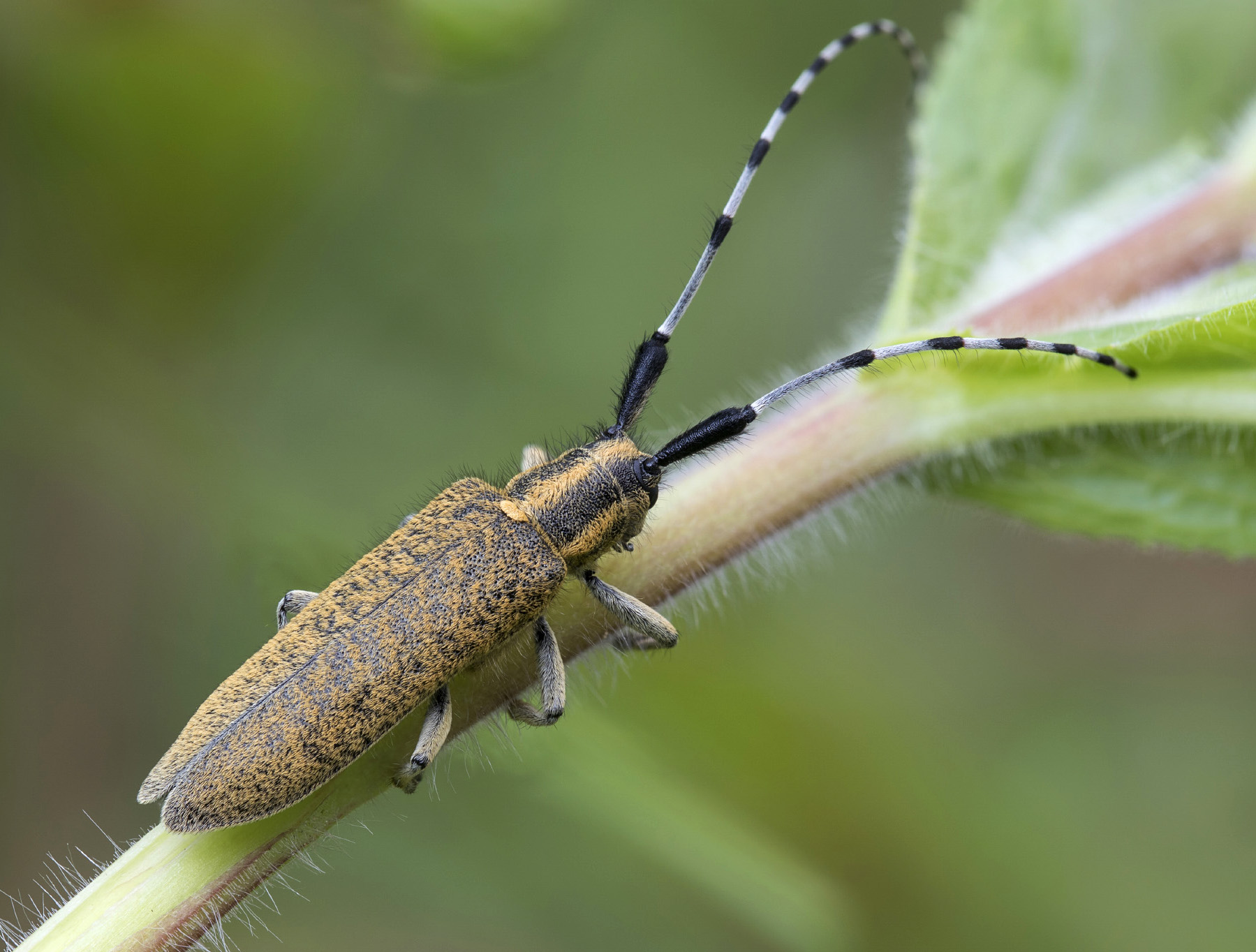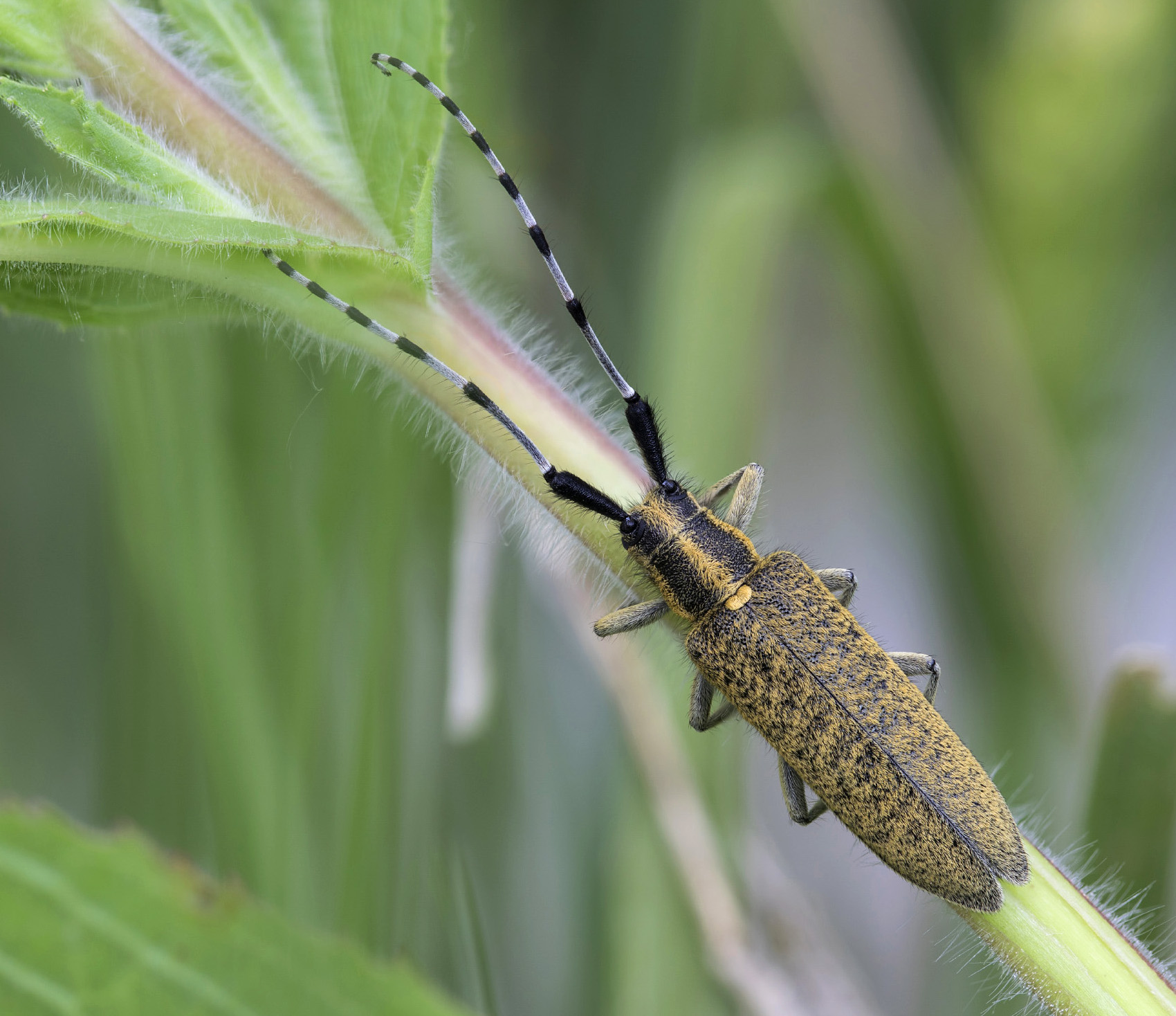In Europe a very common species developing in a variety of herbaceous plants (eg. Carduus, Urtica, Angelica, Chaerophyllum, Artemisia, Salvia, Aconitum).
Like the other species of Agapanthia genus, the larvae of this beetle develop in the above-ground plant tissues (stalks). They cut off the plant stalk before pupation, create the pupal
cells near ground level, and the adults leave the stalks via a newly created exit hole in the side of the remaining stalk.
| Body length: | 10 - 22 mm |
| Life cycle: | 1 year |
| Adults in: | May - August |
| Host plant: | polyphagous in herbaceous plants |
| Distribution: | Europe, Russia, Caucasus, Kazakhstan, Turkey, Near East |
The mounted specimen was collected in Kulmbach environs (Kulmbach district, Upper Franconia, Bavaria, Germany) in summer 1972.
The depicted living beetles were photographed in: (NR) - Pomáz environs (Szentendre district, Pest county, Hungary) on April 28, 2012; (DR) - Moldova Nouă environs (Caraș-Severin county, Banat, Romania) on May 28, 2017.
Collected by Nikola Rahmé, Udo Schmidt and Daniel Rydzi
Sláma M.E.F.:
Tesaříkovití – Cerambycidae České republiky a Slovenské republiky / Cerambycidae of the Czech Republic and Slovak Republic.
Milan Sláma private printing, Krhanice, 383pp [pages 351-352], 1998 [ISBN: 80-238-2627-1].
[download  ]
]





